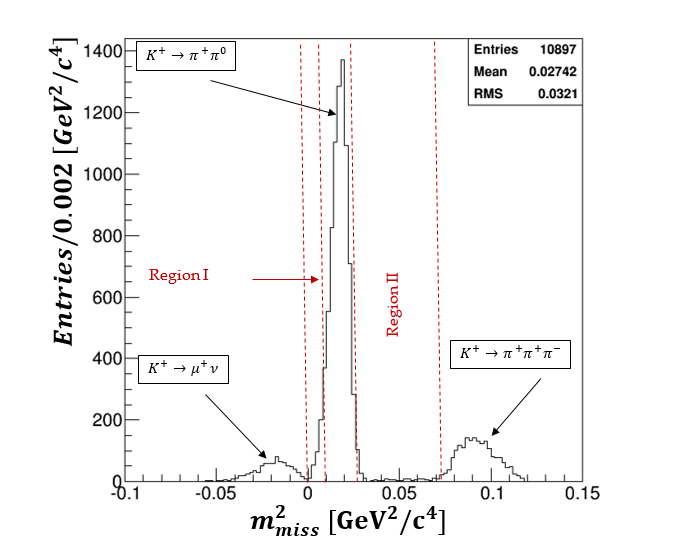NA62 Experiment records first data
Over the last weeks, while everyone has been excited with the restart of LHC, the NA62 experiment at CERN has already started producing data, following the circulation of the first beams in the injector chain in 2014.
The experiment focuses in the study of kaon physics, which has been among the major protagonists of the field in the second half of the twentieth century, as it played a key role in the development of the Standard Model and the discovery of the CP violation: the phenomenon responsible for the observed matter-antimatter asymmetry in the universe.
Why is studying kaon decays important today, when powerful hadron colliders open new energy regimes?
The answer is straightforward. The theoretically clean environment of the ultra-rare kaon decays like K+ -> π+ v vbar or KL -> π0 ν νbar makes them an ideal place to search for tiny deviations from the Standard Model (SM). Precision studies of this environment could point to the discovery of indirect effects of new physics that lies beyond the SM, probing energies scales even higher than those explored by the LHC via direct searches.
The primary goal of NA62 is the precision measurement of the branching ratio of K+ -> π+ v vbar, predicted by the SM to be ~10-10. Since this SM prediction has a relative uncertainty below 10%, the NA62 detectors are designed to reach equal or better accuracy with two years of data.
The NA62 experiment is located in the North Area in Prevessin. The 400 GeV proton beam from the SPS impinges on a fixed beryllium target, producing a beam of hadrons. A system of collimators, magnets, and absorbers selects a monochromatic 75 GeV beam of positive particles, 6% of which are K+. A series of subdetectors, provide charged particle tracking and identification while electromagnetic and hadronic calorimeters complete the experimental setup. NA62 measures both the incoming kaon and its decay products, allowing for event reconstruction and for distinguishing the signal from the dominating background events.
The first data-taking took place between October and December 2014. It mainly aimed at commissioning and calibrating the detectors, checking that the whole system, including data taking and computing resources, is operating as expected.
The first look at the 2014 data has shown that the performance of the various subdetectors successfully matched expectations. All the experimental tools to measure precisely K+ -> π+ v vbar are ready for the upcoming runs. In this respect, the results reached by two of the most challenging detectors operating for the first time have been remarkable: the magnetic spectrometer for charged particle tracking is based on straw-technology entirely placed in vacuum and the 17m long Cherenkov counter (RICH) for π – μ separation at high energies (see Figures 1 and 2).

Figure 1: A snapshot of the radius of the reconstructed RICH rings as a function of the particle momentum measured by the spectrometer. Corrections for offline calibration and alignment are not yet included in these data. The K component at 75 GeV corresponds to beam particles scattered to the spectrometer. Pions and muons can be separated up to 35 GeV/c momentum.

Figure 2: A snapshot of the m2miss distribution, the missing mass squared of the system (K- π) measured using the straw spectrometer only (π) and taking the nominal parameters of the beam (K). The main backgrounds from other kaon decays are shown. The two regions where to look for the signal are also indicated. Corrections for offline calibration and alignment are not yet included in these data. The beam tracker information for measuring the kaon momentum and direction are not yet exploited.
Over the next few months, the collaboration will be busy with the detailed analysis of the data collected during the 2014 "pilot" run. New calibrations are being derived and new releases of the software for the reconstruction of the events are being implemented. By using all the subdetectors at their best capacity, the 2014 data can reveal a realistic prediction of the sensitivity that the experiment will reach during the 2015 data-taking. The 2015 physics run is scheduled to start at the beginning of July and will end in mid November. NA62 is ready to explore new physics scenarios in a complementary way to the LHC experiments by studying the K+ -> π+ ν νbar decay, and several other kaon decays with new physics interest.
*The author would like to thank Giuseppe Ruggiero and Brigitte Bloch-Devaux for their thoughtful comments as well as Roberta Volpe for her valuable feedback.
Giuseppe Ruggiero (NA62 Physics Coordinator) delivered a seminar on the NA62 experiment and technical run results at CERN: https://indico.cern.ch/event/360237/material/slides/1.pdf
